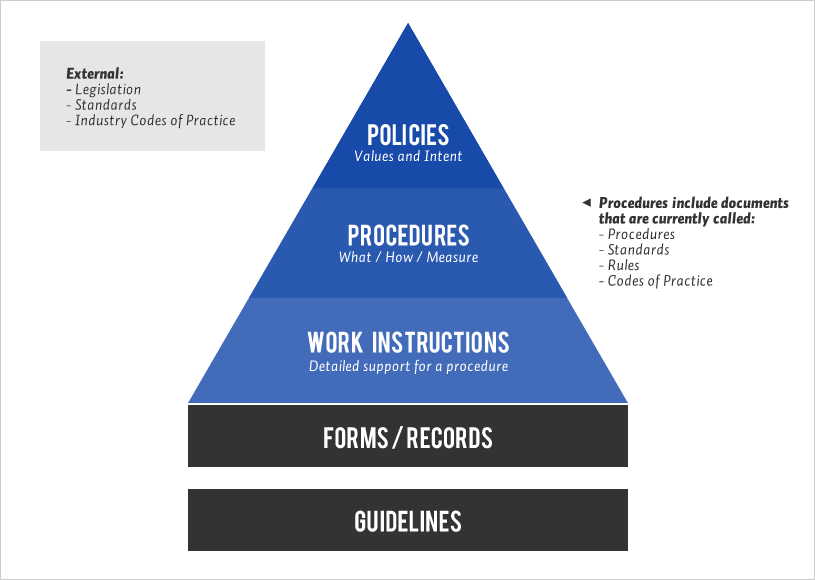Help: Document Definitions
For assistance, email standards@artc.com.au.
Document Definitions and Hierarchy
ARTC is progressively working to adopt uniform standards across its network. Simultaneously, ARTC is reviewing and revising document definitions, hierarchy and numbering. Until this is fully achieved there are various document types such as Standards, Code of Practice, Procedures, Manuals etc that have been categorised as per the proposed hierarchy.
The proposed document definitions and hierarchy are detailed below.
Procedure (Rule, Specification, Internal Standard)
A Procedure is a written, approved method for the execution of some function or activity - generally composed of steps, using established methods or forms. A procedure assigns responsibilities and is designed to achieve a uniform approach to compliance with applicable policies or directives.
A procedure includes a statement of its purpose, the scope of its applicability, with specifications, steps and measures. Some procedures may not be specific on how the outcome is achieved. Procedures are mandatory, but a procedure may include parts that allow for alternative means of achieving the required outcome.
Work Instruction (Manual, Safe Work Method Statement, Maintenance Service Schedules)
A Work Instruction describes how to undertake a specific part of a function, or activity. It is similar to a procedure but is characterised by increased focus and further detail on a particular task. A work instruction is mandatory, and must be subordinate to a procedure.
Guideline
A Guideline is non-mandatory and is intended to encourage good practice and consistent application of an activity.
Form (form, check list and template)
A Form is a document that is pre-designed to ensure those who use the document provide a consistent set of information as specified in a work instruction or procedure. Completed forms become records.
Record (completed form, picture, plan, sound recording, chart, graph, correspondence, meeting minutes, drawing, safe notice, bulletin)
A Record is an evidential document used to record or demonstrate that significant activities or decisions have taken place.

